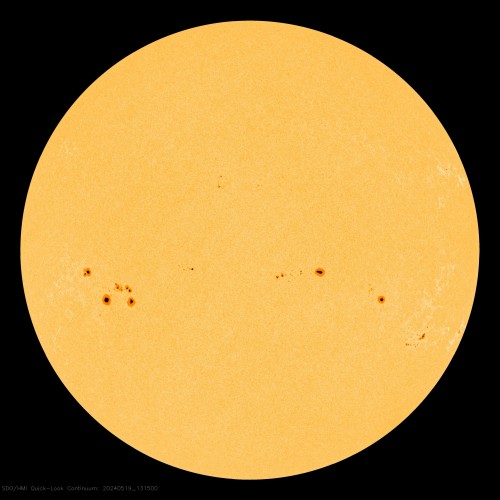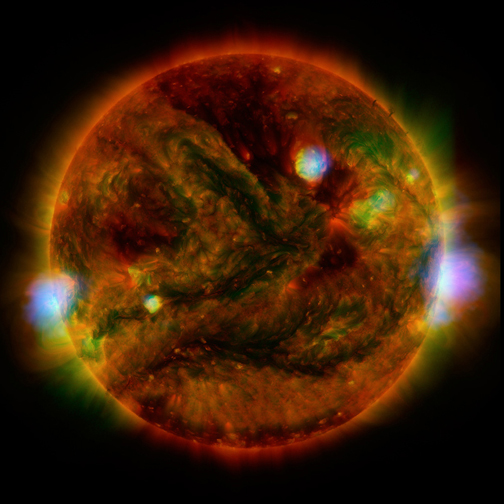Predikce sluneční a geomagnetické aktivity
Solar activity forecast for the period |
April 25 - May 01, 2025 |
| Activity level: | low to moderate |
| X-ray background flux (1.0-8.0 A): | in the range B8.0-C5.0 |
| Radio flux (10.7 cm): | a fluctuation in the range 112-185 |
| Events: | class C (2-13/day), class M (1-6/period), class X (0-0/period), proton (0-1/period) |
| Relative sunspot number (Ri): | in the range 50-180 |
Vlastislav Feik
RWC Prague, Astronomical Institute, Solar Dept., Ondrejov, Czech Republic
e-mail: sunwatch(at)asu.cas.cz
Geomagnetic activity forecast for the period |
April 25 - May 01, 2025 |
| Quiet: | Apr 28 - 29 |
| Unsettled: | Apr 24 - 27 |
| Active: | Apr 24, 30 |
| Minor storm: | Apr 30 - May 1 |
| Major storm: | possible 0 |
| Severe storm: | 0 |
| Geomagnetic activity summary: |
Currently, geomagnetic field is at unsettled level. |
Tomas Bayer, RWC Prague
Institute of Geophysics of the ASCR, Prague
Department of Geomagnetism
Budkov observatory (BDV)
Geomagnetic activity forecast for the period |
April 25 - May 01, 2025 |
Remarks:
Not issued
Poznámka:
Informace jsou přebírány z uvedených externích zdrojů a z důvodů přesnosti jsou zveřejňovány výhradně v anglickém jazyce.
Připravované akce
Přednáška "Zpráva o zatmění Slunce 21. srpna"
16. 10. 2017, 19:00 hodin, Zlín
Vyhledávání
Novinky a aktuality
Částečné zatmění Slunce
12.10.22
Částečné zatmění Slunce nastane 25. října 2022 Začátek astronomického úkazu (první kontakt) v 11:14:58 SELČ Hvězdárna bude pro veřejnost otevřena od 11:00 do 14:00 hodiny.
Odešel dlouholetý pozorovatel Slunce
16.02.22
Dne 11. února 2022 nás navždy opustil ve věku 73 let náš kamarád a kolega pan František Zloch, dlouholetý aktivní pozorovatel projevů sluneční aktivity na Astronomickém ústavu AV ČR v Ondřejově a popularizátor nejen astronomie.
Jaký je sluneční cyklus č. 25?
10.02.22
Již dva roky (od prosince 2019) je v činnosti sluneční cyklus s pořadovým číslem 25. Jak to vypadá po srovnání lednových údajů s počty slunečních skvrn a co nás může čekat v budoucnu?











